Is it possible to put potato tops in a compost heap and how else can they be used on the site?
The tops of various plants are successfully used to fertilize the soil in summer cottages. Is it possible to put potato tops in a compost heap, how else can they be used and what benefits will they bring to the gardener? We’ll tell you in more detail in our article.
What you can and cannot add to compost
It would seem that preparing compost is simple: just pile up food and garden waste and wait until it rots.
As a result of natural overheating, compost will be obtained. But There are some subtleties that should be taken into account when preparing this natural fertilizer.
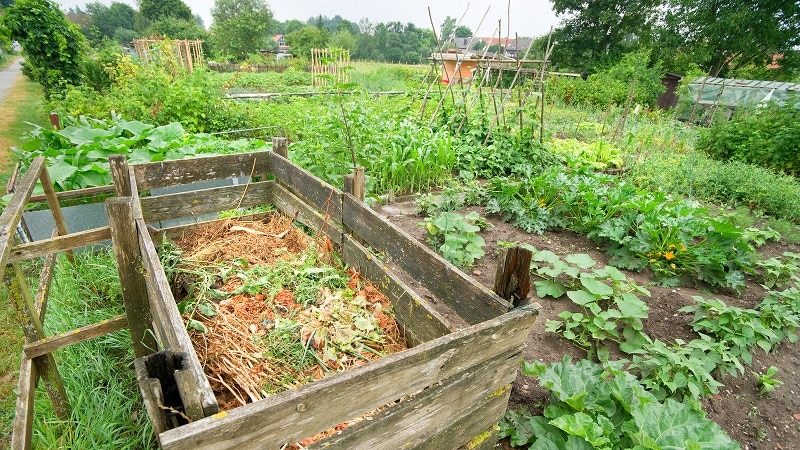
Not everything is allowed to be added to a compost heap or pit.. Some waste will not rot, but will contaminate the soil or attract rodents.
What can you put in compost?:
- cut grass;
- weeds without aggressive roots and ripe seeds;
- fallen leaves;
- bird droppings and manure of herbivorous domestic animals;
- peat;
- mushrooms;
- tea leaves and coffee grounds;
- eggshells – they contain natural calcium;
- leftover raw vegetables and fruits;
- thin branches;
- paper (napkins, paper towels);
- small chips, tree bark, sawdust, seed husks, straw.
Most household waste is not suitable for composting, as it is not a cesspool. All components must be properly rotted and recycled.
Can not use:
- diseased plants;
- citrus peel;
- spoiled bread - it will spread mold;
- leftover fatty meats;
- fish and chicken bones;
- fruits with large seeds;
- perennial seeded weeds with roots;
- synthetic fabrics.
In order for the processed mixture to be beneficial for all plants on the site, a serious approach will be required from the summer resident to the selection of ingredients and the laying process.
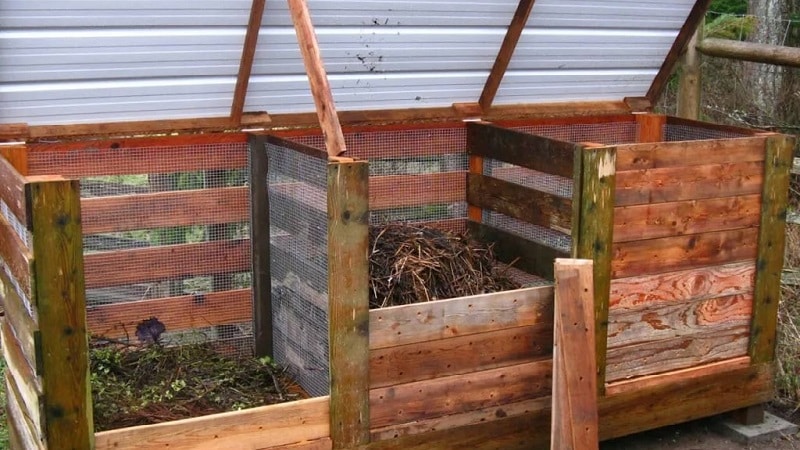
Requirements for good compost
When applied to the soil, it is made according to all the rules compost improves its structure and increases fertility.
Each gardener makes it according to his own recipe (there are many options). Use different ingredients and additives, prepare anaerobically or aerobically, collected in heaps, placed in holes, trenches or in special boxes and closed containers.
The main thing is that as a result, the mature compost mass should be moist, crumbly, and have a dark color and the pleasant smell of damp forest soil.
Potato tops in compost
For summer residents there is no clear opinion whether it is possible to add potato tops into compost.
Most often, closer to autumn, an insidious disease appears on potato leaves - late blight. Along with the tops, pathogenic fungi can be introduced into the compost. Despite the fact that when rotting inside the heap the temperature reaches +60...+80°C, this is not enough to destroy them.
To avoid infecting future plantings, tops laid in compost are watered with a 3% solution of copper sulfate., after which they cover the top with a layer of earth. It is used only in the third year after planting, when all fungal spores die.
Is it possible to add
Healthy fresh tops can and should be used for composting. If you suspect that the plant has been infected, it is better to burn it and then pour it into the compost heap in the form of ash.
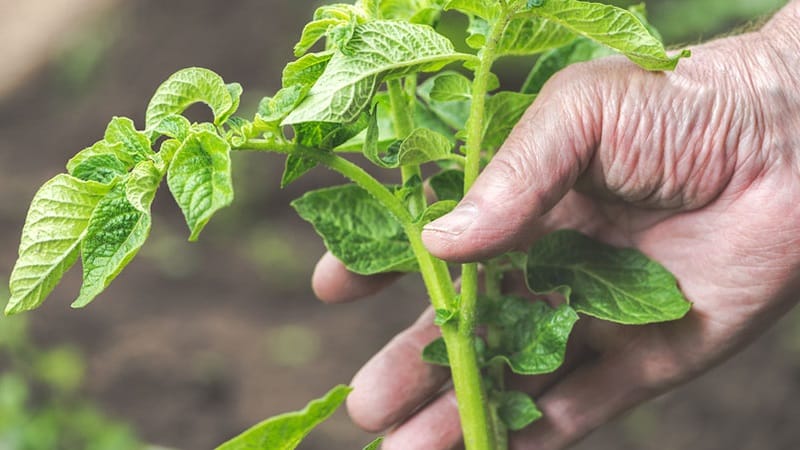
A few weeks before harvest, the tops are mowed and placed in compost heaps., pouring copper sulfate to get rid of possible diseases. For disinfection, you can also use a biological preparation based on the soil fungi Trichoderma, which fights the main diseases of garden crops.
Efficiency, benefit and harm
Potato tops can be used in the form of compost to feed any types of cultivated plants. The increased content of soil bacteria, which after application will continue to work in the soil, makes such compost a valuable fertilizer.
It attracts earthworms, which can be called producers of humic acids. By eating plant debris, they release coprolites into the soil - fermented substances that are absorbed by plants better than mineral fertilizers.
Attention! Unfortunately, the tops rarely remain completely healthy by the time of harvesting. Untreated diseased plants can cause damage and make the compost a source of contamination.
How to make compost from potato tops
Compost from potato tops is an organic fertilizer obtained by its decomposition under the influence of microorganisms.. It is prepared in the same way as from any other plant material.
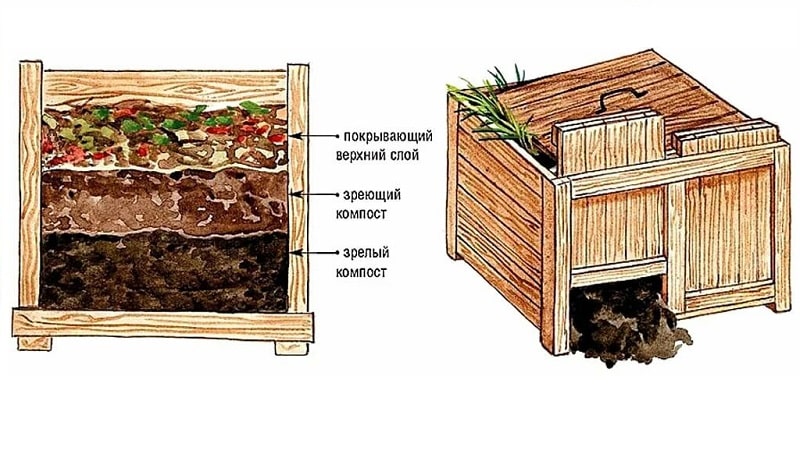
Classic and fast way
The principle of preparing compost in a pit, heap or box is the same. Let's consider the classic method - composting in a heap.
For its formation, a shady area of the garden is allocated, remote from the residential building.
Formed in stages:
- A 20-30 cm layer of peat and a layer of straw or dry leaves are poured onto the compacted earth.
- The tops are placed in the next layer 15-20 cm high.
- Sprinkle a solution of copper sulfate (2 tablespoons per 10 liters of water) on each layer of tops. This way the compost will be safe as a fertilizer.
- A layer of carbon-containing components is placed on top of the tops - dry leaves, paper, branches, hay.
- Then sprinkle with garden soil to a thickness of 10-15 cm. You can add ash to the soil.
- Lay the components in layers until the height of the pile reaches 1-1.5 m.
- The layers are alternated so that for every three parts of dry matter there is one green. The top layer is soil or straw, to retain released gases and better preserve nutrients.
Complete the preparation of the compost heap with a layer of garden soil.. The compost is regularly shoveled and watered in dry weather. The top can be covered with plastic wrap.
Important! If there are no nitrogen-containing components in the compost pit, the fertilization process may take many years.
If you need to speed up the maturation of compost, make the piles smaller. The optimal height is up to 1 m in height and width at any length. The speed of ripening depends on the composition, correct ratio and alternation of components. When using special accelerators and aerating the heap, the process lasts one season.
Features of watering compost
If the pile dries out, it prevents the compost from maturing.. In this case, it needs to be watered. But over-hydration will only do harm. When it rains, it is better to cover it with film so that the beneficial substances do not wash out.
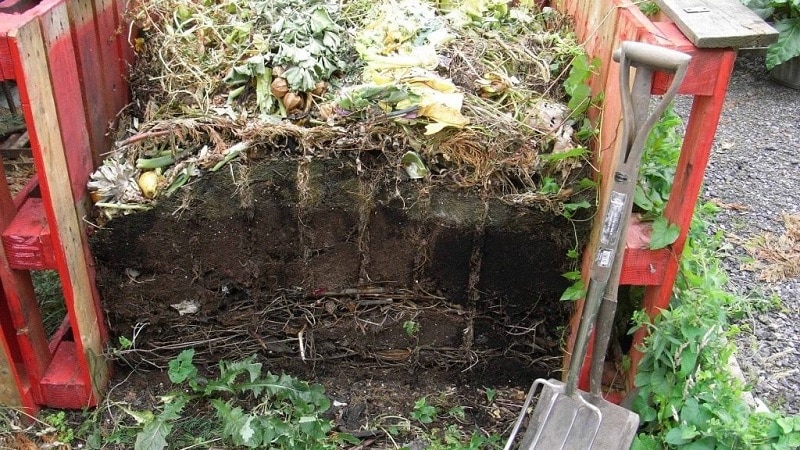
Application of accelerators
You can speed up the maturation of compost using improvised means., which can be found in every home, or purchased EM preparations (containing effective microorganisms) and biodestructors.
The dry yeast solution is poured into the pile, after making small depressions in it.. This solution is prepared simply: 1 tbsp. l. yeast per 1 liter of water plus a glass of sugar. The temperature must be above +18°C to activate the proliferation of yeasts that will digest organic matter, accelerating rotting.
Attention! Adding slurry also speeds up compost maturation due to the excess nitrogen. But it is dangerous to use fresh manure. It most likely contains pathogens, helminths, and many seeds of aggressive weeds.
Store-bought EO preparations contain bacteria that help decompose organic matter faster:
- "Tamir" - increases the nutritional value of the finished compost and reduces its ripening period to two to three weeks. For the best effect, the solution is poured into the pile every 20 cm. It is prepared in a ratio of 1:100, approximately 5 liters of solution are used per 1 m³.
- "BIOTEL-compost" is a safe, effective preparation for processing food and plant waste. A solution is made from the drug, which is poured into a pile. To process a heap with a volume of 1 m³, you will need 50 g of the drug.
- “Baikal EM” – contains strains of beneficial microorganisms for accelerated compost maturation.
- “Shine” - at the stage of laying the heap, it is sprinkled on each layer of organic residues, and then watered. Or they make holes in an already collected pile, fill it with “Shining” and water it with water.
Sometimes, to reduce the cost of preparing fertilizer, in addition to EO preparations, preparations for cleaning septic tanks are used: “Doctor Robik”, “Biosept”, “Septifos” and others.
It can be useful:
Hilling potatoes and how to do it correctly
Plant decomposition factors
Plant residues decompose in stages, forming compost:
- Week 1 – Beginning of decomposition and fermentation. At this time, the temperature inside the heap reaches +60…+70°C.
- 2-3 weeks – heat levels drop significantly. There is active gas formation and fungal growth.
- 4th week – earthworms begin to work. Their activity completes the process of humus formation.
- The decay of plants is complete when all processes have ended and the temperature of the compost heap does not exceed room temperature.
When the mass has become loose and friable – the composition is ready for use.
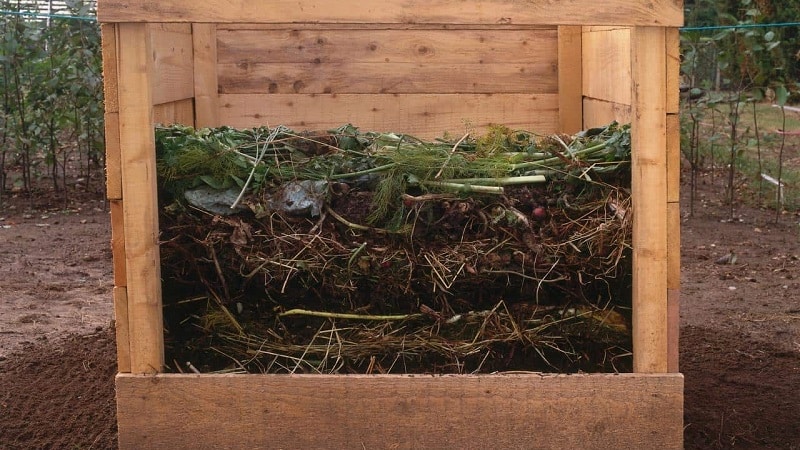
Where else can you use potato tops?
Potato tops are a valuable biological material. Application and disposal can be carried out in several ways: burning, preparing an insecticide, using as mulch.
Burn for fertilizer
Potato growers who don't want to bother with compost can burn the tops. To do this, it is folded outside the garden, dried and set on fire.. The remains are collected and used as fertilizer.
Ash from tops is a phosphorus-potassium fertilizer, containing other microelements useful for garden and vegetable crops: iron, manganese, molybdenum, boron. It is applied to the soil in the fall.
Use as an insecticide
Potato tops contain a high content of toxic substances - for example, solanine. An insecticidal infusion made from it helps against aphids, cabbage whites, spider mites, fleas and caterpillars. The resulting product will be environmentally friendly; toxic compounds will not be absorbed into fruits and vegetables during decomposition. Its production is accessible to any gardener.
To prepare the solution you will need 0.6 kg of fresh healthy tops or 0.4 kg of dried:
- Chopped greens are poured into 5 liters of water.
- Leave covered for 4 hours.
- Add 50 g of laundry soap to the strained solution.
Plants are treated in the evening, in windless, dry weather., once every 2-10 days, depending on the number of pests.
Place under fruit bushes and trees
Potato tops are laid in a thick layer (6-10 cm) in tree trunks, retreating 0.5 m from the trunk. This natural shelter will protect the tree’s root system from frost in winter, and in spring, semi-decomposed mulch from the tops will help quickly warm up the soil.
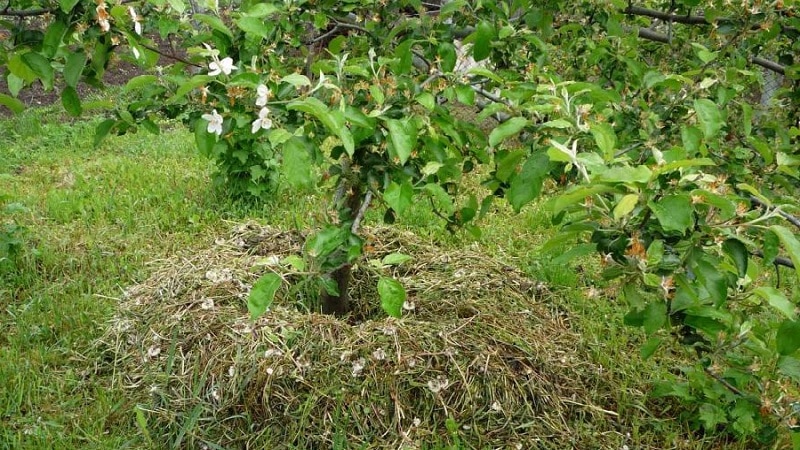
Besides, tops prevent weeds from growing and repel pests, and after rotting, fertilizer is obtained. Potatoes do not have any common diseases with apple, plum and cherry trees. It is also used for mulching berry bushes: raspberries, currants, gooseberries.
Is it possible to put rotten potatoes in compost?
Rotten foods, including potatoes, are safe to compost. They decompose well and become a nutritious fertilizer.
Raw potatoes
If the tubers have not been treated with herbicides and pesticides, then they can be composted. If properly composted, they will quickly rot, especially if they are crushed or at least cut in half.
Important! The peculiarity of raw potatoes is that they can germinate in the nutrient medium of a compost heap. Pull out these bushes immediately, as there will be no harvest there.
Tips and tricks
Old, dried potato tops are an excellent food for soil fungi., which convert it into humus, serve as the basis of the food chain in the formation of a stable soil ecosystem.
The best place for potato tops is the far corners of the garden. Place the tops there every year for several years in a row. Don't stir, don't make a regular compost pile, don't add kitchen scraps to it.
After 3 years, the lower layers in this pile will turn into fertile soil that is healing for the roots. When added to planting holes, it suppresses harmful fungi and diseases, protects the roots of fruit bushes and perfectly nourishes them. Especially recommended for currants.
Conclusion
Proper use of potato tops in a summer cottage eliminates the possibility of plantings becoming infected with late blight or other diseases.
Healthy tops can be placed in a compost heap or placed under fruit trees and bushes. Experienced gardeners prepare fertilizers and insecticidal infusions from this greenery.